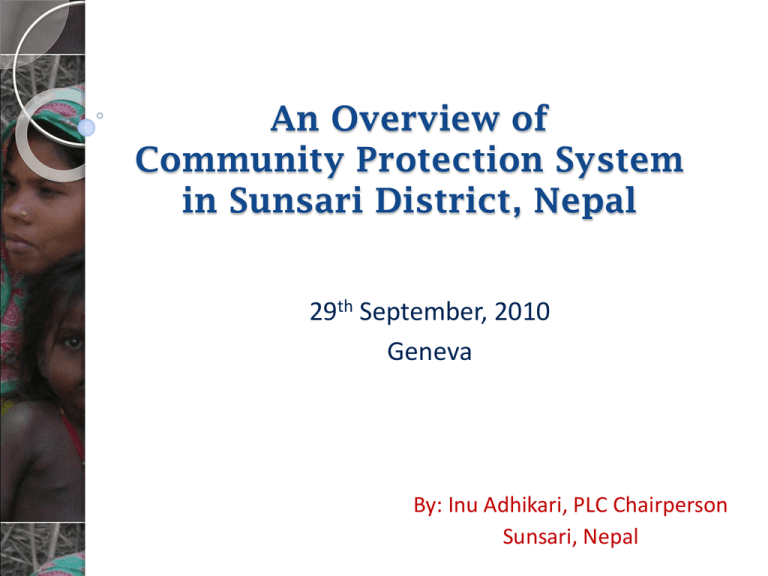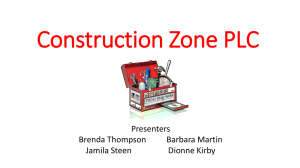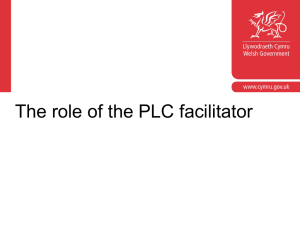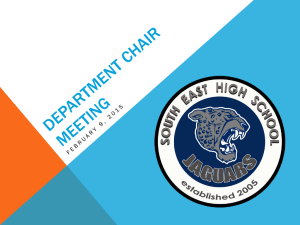
An Overview of
Community Protection System
in Sunsari District, Nepal
29th September, 2010
Geneva
By: Inu Adhikari, PLC Chairperson
Sunsari, Nepal
Situation of Children & Women in Nepal
• Population of Nepal: 25 million [Female – 50.04%, but in some
places outnumber men by 3:2]
• Population below 5 years – 3.5 million
• Population below 18 years – 12.2 million
• Over 1 million do not attend school
• Approx 2.6 million children aged 5-14 regularly work in Nepal
• 5,000 girls aged less than 15 years are involved in commercial
sex work
• 12,000 girls are trafficked annually [20% are below 16 years of
age]
• Child marriage before the age of eighteen is at 40%
• Over 5,000 children living in the streets
• Over 8,000 children between 12-18 years associated with
armed forces & armed groups
Problems of Children & Women in Nepal
•
•
•
•
•
•
•
•
•
Domestic & Social Violence
Trafficking
Child marriage
Child labour
Sexual abuse
Rape
Harmful Traditional Practices: Chhaupadi, Deuki, Jhuma
Children Affected by AIDS
Children Affected by Armed Conflict
Causes for the problems of women & children
• Gender Discrimination
• Social norms & values
• Discriminatory laws & practices
• Illiteracy & Poverty
• Weak system/state presence at local
level
Institutional
Arrangements
National level
District level
Village Level
Ward Level
Ministry of
Women, Children
& Social Welfare
Department of
Women
Development
Center Child
Welfare Board
Women
Development
Office
District Child
Welfare
Board
Sectoral
Ministries
District Paralegal
Committee
VDC Office,
Health
Facility
Village Paralegal
Committee
Ward level
PLC
DDC & GOs
(Police, Court,
Hospital)
Community
Women & Children
Disadvantaged
groups
Para-legal Committees (PLC)
Para-legal committees are community-based
protection mechanism with basic knowledge
on the rights of the children and women,
who work against the violence, exploitation,
abuse and discrimination against women &
children.
Objectives of Para-legal Committees
• Awareness Raising
• Early detection & prevention
• Case Facilitation- from reporting to
reconciliation
• Mediation of simple case & Follow up
• Referral of serious ones & crimes
• Monitoring and Reporting
Para-legal Committees in Nepal
( supported by UNICEF)
Far Western
•HUMLA
Mid Western
•DARCHULA
•BAJHANG
•MUGU
•BAITADI
•DADEL•DHURA
•BAJURA
•JUMLA
•DOTI
•ACHHAM
•KALIKOT
•DOLPA
Western
•MUSTANG
•KANCHAN•PUR
•DAILEKH
•JAJARKOT
•KAILALI
•RUKUM
•MANANG
•SURKHET
Central
•MYAGDI
•SALYAN
•BARDIYA
•ROLPA
•GORKHA
•KASKI
•LAMJUNG
•PARBAT
•BANKE
•PYUT•HAN
•DANG
Eastern
•RASUWA
•GULMI
•SYANGJA
•ARGHAK
•HACHI
•TANAHU
•PALPA
•KAPIL•BASTU
•RUPAN•DEHI
•NUWAKOT
•DHADING
•NAWAL
•PARASI
•CHITWAN
•SINDHU•PALCHOK
•DOLAKHA
•KATHM
•BHAK
•SULUK•HUMBU
•MAKAWAN- •LALIT •KAVRE
•PUR
•PARSA
Paralegal Committees formed in 2006 onwards
•BARA •RAUT•AHAT •SARLAHI
•MAHO•TARI
•DHANUSA
•KHOTANG
•BHOJ•PUR
•UDAYAPUR
PLC initiated in 2009
Sunsari
1999
•TERHA•THUM
•DHAN•KUTA
•ILAM
•SIRAHA
•SAPTARI
PLC initiated in 2010
•TAPLEJUNG
•OKHAL•DHUNGA
•SINDHULI
Para-legal Committees formed in 1999-2005
•SANKHUWA•SABA
•SUNSARI •MORANG
•JHAPA
Sunsari District
Baraha Chhetra
Bishnupaduka
Panchkan
ya
49 VDCs and 3 Municipalities
Barahachhetra
Bharaul
Dharan N.P.
Mahendranagar
Bakalauri
Prakashpur
Singiya
Hanshposha
Pakali
Bha.Si.
Itahari N.P.
Dumaraha
Madhuwan
Paschim Kasuha
Aekamma
Madhesa
Bhokraha
Khanar
Madhelee
Chadwela
Inaruwa N.P.
Sonapur
Laukahi
Narshinhatappu
Babiya
Aurabarni Simariya
Duhabi
Sripurjabdi
Santerjhora
Tanamuna Bhaluwa
Jalpapur
Haripur
Ramnagar
Gautampur
Chhitaha
Purbakusaha
Harinagar
Chimdi
Basantapur
Madhyeharsahi
Ramganj Belgachhi
Dhuskee
Ramganj Senuwari
Amahibelaha
Dewanganj
Amaduwa
Kaptanganj
Sahebganj
PLC in 35 VDCs and 3 Municipalities
PLC & CAP VDCs [18]
PLC & CAP Municipalities [3]
PLC VDCs [17]
Organizational Structure of PLC
District Paralegal
Committee [DPLC-1] -11
members
Each
VDC has
9 wards
District Resource
Group [DRG]– 13
Provide training &
technical support to
PLCs
Village Paralegal Committee
[VPLC-32 VDCs & 3 Municipalities–
13 members & Advisors-at least 1
male]
Ward Paralegal
Committee Ward 1
Ward
Paralegal
Committee Ward 2
Ward
Paralegal
Committee Ward 3
Ward
Paralegal
Committee Ward 4
Ward
Paralegal
Committee Ward 5
Ward
Paralegal
Committee Ward 6
Ward
Paralegal
Committee Ward 7
Each Ward Committee has 11 members
Ward
Paralegal
Committee Ward 8
Ward
Paralegal
Committee Ward 9
PLC – Linkages & Coordination
DRG &
District PLC
GOs
Court/Police/CDO
WDO/DHO/DCWB
I/NGOs,
HR Activist
Hospitals,
Health Facilities
VDC - PLC
School,
Child Clubs,
Teachers, parents
DDC/VDC,
Local leaders,
Political parties
Community, COs,
Women Groups,
Users Committee
Paralegal Committee in Figure
Nepal
Sunsari
Total Population: 25 million
Total Population: 625,633
Total District: 75
Total VDC: 49
Total VDC: 3,913
Total Municipality: 3
Total Municipalities: 58
Village PLC: 717 /23 Districts
District PLC: 1
Planned by 2013: 1,300 /75 Districts
Village/Municipal PLC: 38
Ward PLC: 261
Total DRG Members: 207
Total DRG Member: 13
Total VDC PLC Members: 9321
Total Village PLC Members: 463
[17% Disadvantaged Groups]
Total Ward level PLC Members : 2,871
Type of cases registered in PLC
District: Sunsari
Category
Jan-June, 2010
No
%
Child abuse
29
3%
Child labour
21
2%
Child marriage
23
2%
Citizenship
19
2%
Divorce
14
1%
Child abuse
Child labour
Child marriage
Citizenship
Divorce
Domestic violence
492
46%
Domestic violence
Financial disputes
35
3%
Financial disputes
Incest
2
0%
Incest
Others
Others
223
21%
Polygamy
14
1%
Property dispute
37
3%
Rape cases
17
2%
Socail violence
Sexual abuse
20
2%
Trafficking
Socail violence
146
14%
Trafficking
11
1%
Total
1074
Polygamy
Property dispute
Rape cases
Sexual abuse
702 cases solved by PLCs & 372 are Referred
Age-wise cases registered in PLC
Key Features of PLC (1)
Attitude Change & Capacity Building - PLCs help to change
the attitudes that exist within the society through different
interventions while at the same time building the capacity of the
protected system.
Community-based Approach - Undertaken by members of
community themselves.
Led by Women
- PLCs comprise only women members.
Leadership and all the process undertaken by women.
Inclusive Membership - Selected from all sections of
community, all wards, representation of disadvantaged groups
Providing Access to Justice - PLCs providing access to justice
for rural and poor women & children by supporting them for free
legal aid services and follow up support.
Key Features of PLC (2)
Complementary Provision - PLC is complementary to, and not
a replacement for, the formal justice system - filling a gap between
Community and Service providers
Act as Watch Groups - PLCs have acted as watch groups against
violence of women & children during the normal and emergency
periods. Facilitate reporting of ‘hidden cases’ (domestic violence,
sexual violence) to Police
Neutrality & Volunteerism - PLCs have always maintained
political neutrality & working for women & children. Hence, were
able to operate during the period of armed conflict in the country. All
the PLC members are working voluntarily.
In Depth Training - 24 days intensive training on women’s and
children’s rights, international conventions, Nepali legal code,
mediation skills.
Some issues/Challenges in PLC
Threats to PLC members by conflicting parties.
Threats to guardians especially in reporting the young
girls case.
Increasing no. of rape cases on young girl child.
Reporting of children’s cases.
Need to focus prevention & awareness among
parents, young girls & community [curative v/s
preventive].
Weak protection services at District level for referred
cases.
Extending the programme throughout the country
(even by 2013 only 33% of the country will have a PLC)
Case no. 1
Three Girls (12,14,15 Years) from disadvantaged community
of
Sunsari were convinced and brought by their own relative (Aunt) to
Kathmandu for domestic work. Later on, they were forced to work
in Cabin Restaurant for commercial sex work.
Somehow, one of them, contacted Paralegal Committee (PLC) and
with the help of PLC that case was reported to the police. The
case was then exposed to the family members & community. With
the support of PLC, all the three girls were freed. The aunt was
imprisoned and the girls were provided NRs. 25,000 as
compensation.
Case no. 2
A man has raped a woman & a 3 yrs old girl, but neither case was
reported to PLC, nor exposed to anyone. The family members & the
relatives hide those cases in the name of social prestige & norms. As a
consequence, he was encouraged to attempt such cases time & again.
After a few month, he again raped his own baby niece aged just 16
months. This case was then reported to the PLC by her mother. The
PLC has supported her to report the case to the police. The PLC
coordinated with District Resource Group to provide free legal aid
service for the family. The crime was then proved and the man was
imprisoned by the Court.
The PLC & Women Development Office have provided the medical
support for the baby.
PLC members in rally during International Women’s Day
District officials & political leaders during the review of PLC
PLC members working in a group during training
VDC Secretary addressing the participants during external visit at PLC
Thank you







